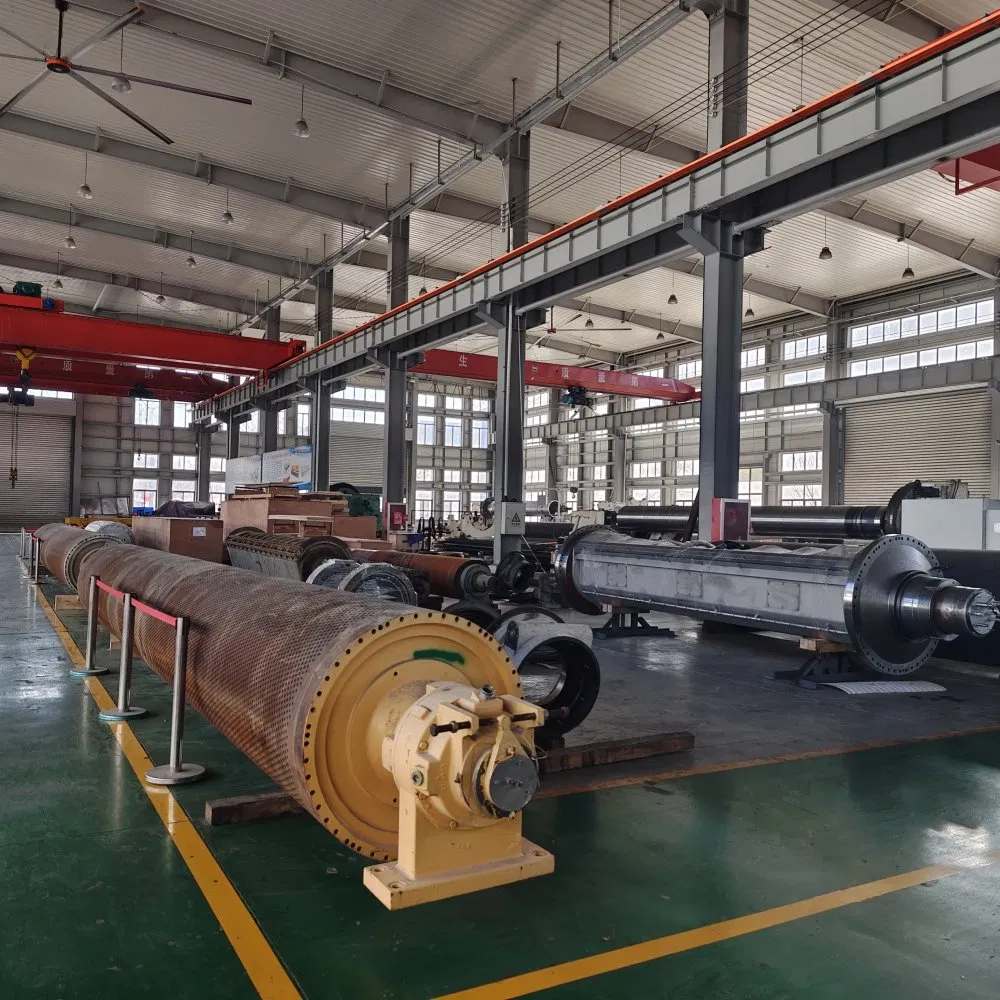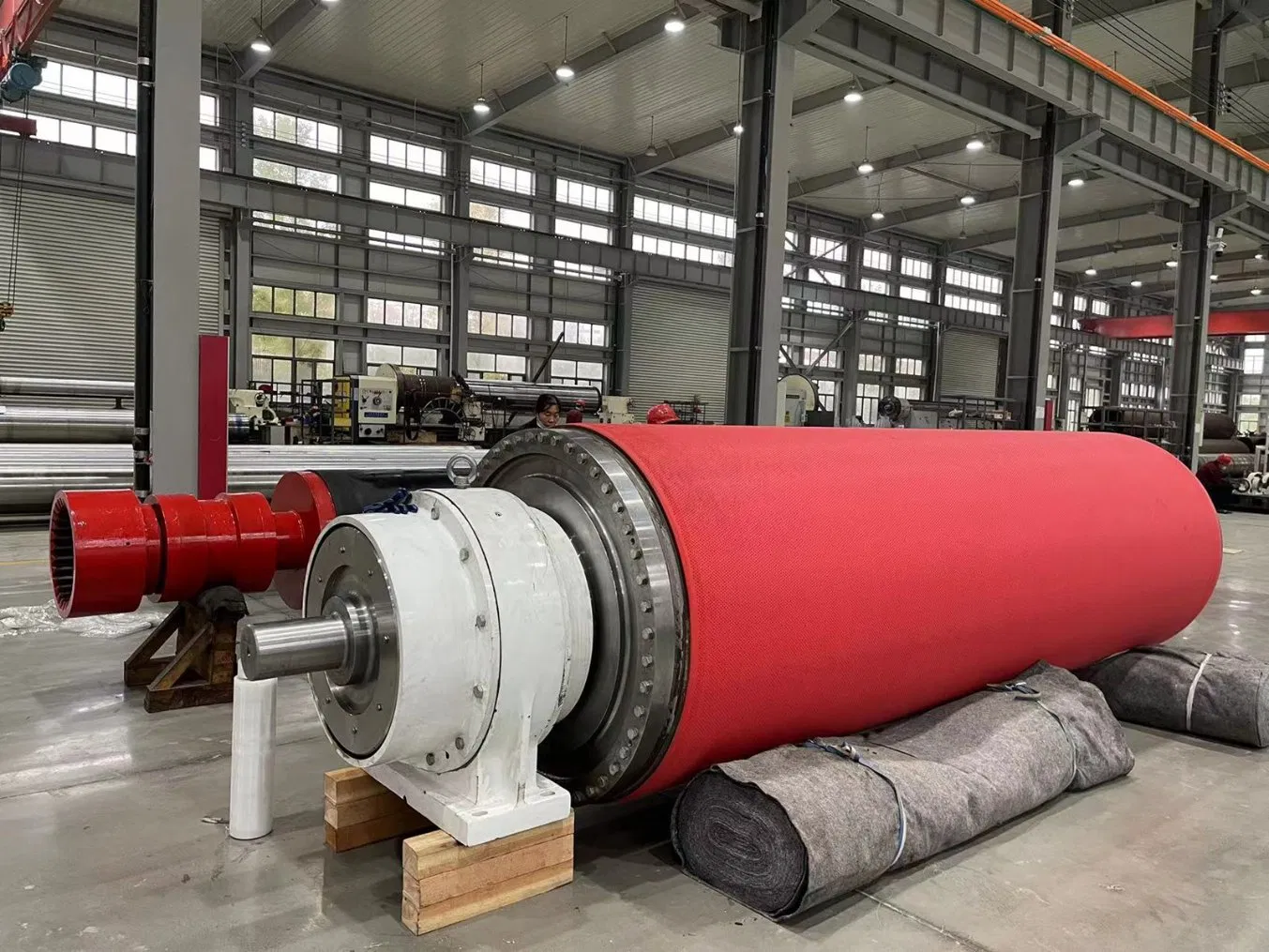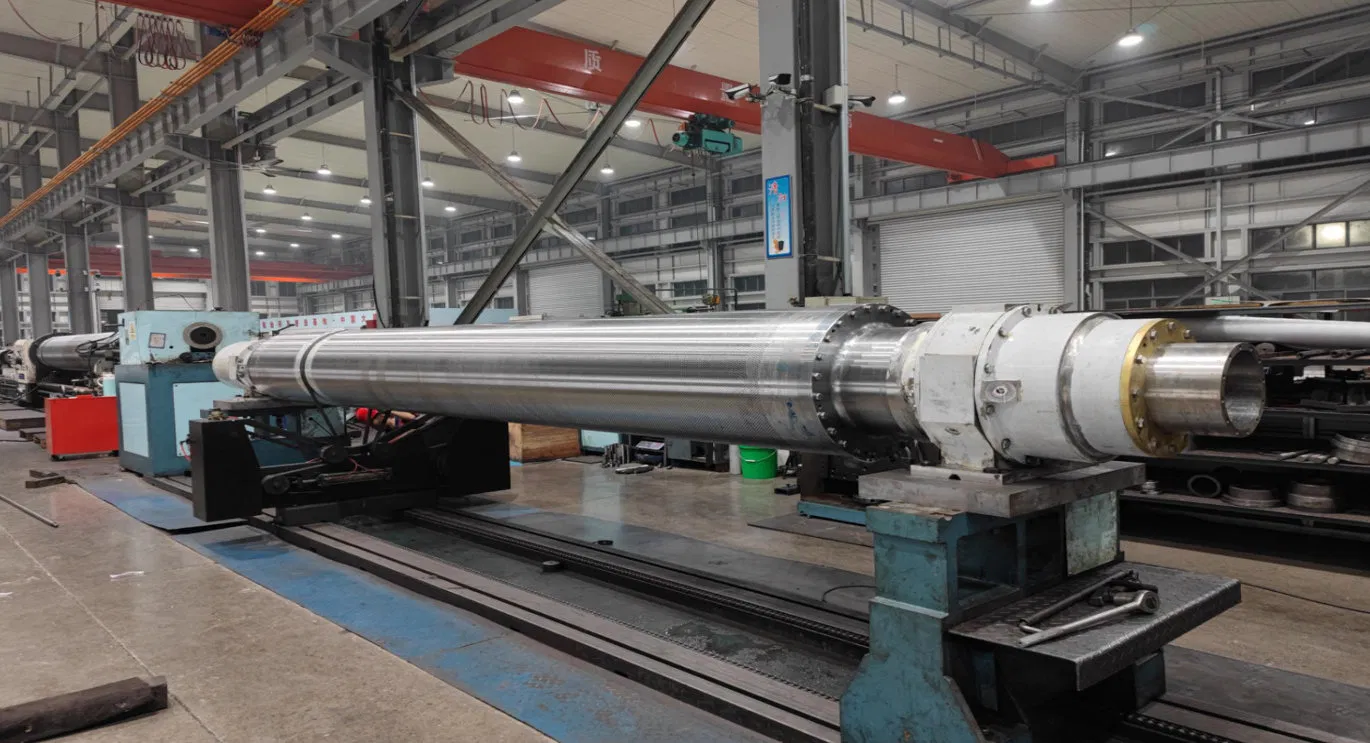The hum of a paper machine operating at peak efficiency is a symphony to any manufacturer's ears. However, that harmony can quickly turn into a jarring cacophony when roll vibration sets in, leading inevitably to the dreaded sheet breaks. These aren't just minor inconveniences; to be honest, they represent significant production losses, increased waste, and substantial maintenance costs. For paper manufacturers, understanding and mitigating these issues is paramount to maintaining competitive edge and profitability. This guide delves deep into the heart of these challenges, offering a comprehensive look at how precision balanced paper machine rolls serve as the definitive solution, transforming operational headaches into streamlined, reliable production.
In my experience, the paper industry operates on razor-thin margins, where every minute of downtime and every foot of wasted product directly impacts the bottom line. It's worth noting that roll vibration and subsequent sheet breaks are among the most persistent and costly problems faced by mills worldwide. But what if there was a proven, systematic approach to dramatically reduce, if not entirely eliminate, these issues? This article aims to provide just that: a manufacturer's practical guide to leveraging the power of precision balancing, ensuring your paper machine rolls contribute to, rather than detract from, your operational excellence.
Understanding the Core Challenges: Roll Vibration and Sheet Breaks in Paper Production
Before we can truly appreciate the solution, it's crucial to grasp the full scope of the problem. Roll vibration in paper machines manifests as an erratic, oscillatory motion of the rolls, often visible and certainly palpable. This isn't just a nuisance; it's a destructive force. The immediate effects include uneven pressure distribution across the web, leading to inconsistent sheet formation, calendering issues, and ultimately, a compromised final product. But the most catastrophic outcome, and perhaps the most common, is the sheet break.
Sheet breaks occur when the continuous web of paper tears, halting production and requiring manual intervention to re-thread the machine. This process is time-consuming, labor-intensive, and incredibly wasteful. Interestingly enough, while various factors can contribute to sheet breaks—such as pulp quality, machine speed, and environmental conditions—a significant percentage are directly attributable to excessive roll vibration. The constant pounding and uneven forces exerted by an unbalanced roll create stress points within the paper web, weakening it until it succumbs to the tension. Many experts agree that addressing the root cause of vibration is the most effective way to solve persistent sheet break problems.
Consider the ripple effect: a single sheet break can lead to minutes, even hours, of lost production. Multiply that by several occurrences per shift, and the financial impact becomes staggering. Beyond the direct costs of lost production and wasted raw materials, there are indirect costs: increased wear and tear on bearings, frames, and other machine components; higher energy consumption due to inefficient operation; and the constant stress on maintenance teams. Can your operation truly afford to ignore these recurring issues?
The Unseen Culprit: Imbalance and Its Impact on Paper Machine Rolls
At the heart of most roll vibration issues lies a fundamental mechanical problem: imbalance. In simple terms, imbalance occurs when the mass of a rotating body is not evenly distributed around its axis of rotation. Even a seemingly perfect roll, fresh from the factory, can possess a minute amount of imbalance due to manufacturing tolerances. Over time, however, this imbalance can worsen significantly due to a variety of factors inherent to the paper-making process.
Think about the harsh environment paper machine rolls operate in: constant exposure to moisture, pulp fibers, and chemicals. This can lead to uneven build-up of material on the roll surface, localized corrosion, or even slight deformations over time. Furthermore, repairs, coatings, or even routine cleaning can inadvertently alter the mass distribution. As a roll spins at high speeds, even a tiny unevenness in mass creates a centrifugal force that pulls the heavier side outwards. This force, constantly changing direction as the roll rotates, translates directly into vibration. The faster the roll spins, the greater this force becomes, escalating the vibration to destructive levels.
This dynamic imbalance doesn't just cause the roll itself to shake; it transmits those vibrations throughout the entire machine structure. Bearings are subjected to undue stress, leading to premature failure. Structural components experience fatigue, potentially causing cracks or misalignment. And, most critically for paper production, the precise nip pressures required for consistent sheet formation are disrupted, leading to thickness variations, web flutter, and ultimately, the dreaded sheet break. It's a chain reaction initiated by an often-invisible flaw, underscoring why addressing imbalance with precision is not just an option, but a necessity for paper machine rolls.

The Science of Stability: Precision Balancing as the Definitive Solution
If imbalance is the problem, then precision balancing is the scientifically engineered solution. This process involves detecting and correcting the uneven mass distribution in a rotating body, ensuring that the roll spins smoothly and efficiently, even at high operational speeds. It's far more intricate than simply adding or removing weight; it's about strategic placement and removal of material to achieve perfect equilibrium.
The process typically begins with mounting the paper machine roll onto a specialized balancing machine. These machines are equipped with highly sensitive sensors that detect even minute vibrations as the roll is rotated. The machine then calculates the exact amount and angular location of the imbalance. There are two primary types of balancing: static and dynamic. Static balancing addresses imbalance along a single plane, suitable for narrow, disc-like components. However, for long, cylindrical paper machine rolls, dynamic balancing is essential. Dynamic balancing accounts for imbalance in two planes, correcting both static and couple imbalance, which is crucial for preventing wobble and vibration at high speeds.
Once the imbalance is precisely identified, corrective weights are added or material is removed at specific locations on the roll. This might involve welding small weights, drilling holes, or grinding away excess material. The process is iterative: balance, measure, correct, and repeat until the residual imbalance falls within extremely tight tolerances, often specified by ISO standards (e.g., ISO 1940-1). Our company employs state-of-the-art balancing equipment capable of achieving these stringent requirements, ensuring that paper machine rolls operate with minimal vibration, even at the highest speeds. This meticulous approach is what differentiates mere "balancing" from true "precision balancing," directly contributing to solving roll vibration and sheet breaks.
Tangible Benefits for Manufacturers: Beyond Just Solving Vibration and Sheet Breaks
Investing in precision balanced paper machine rolls offers a cascade of benefits that extend far beyond simply reducing vibration and sheet breaks. While these are critical improvements in themselves, the positive ripple effects can significantly impact a manufacturer's overall operational efficiency, cost structure, and product quality. From an operational perspective, the most immediate gain is reduced downtime and increased uptime. With fewer sheet breaks and less need for emergency maintenance due to vibration-induced failures, machines can run continuously for longer periods, maximizing throughput and production volume.
Furthermore, precision balancing leads directly to improved sheet quality and consistency. When rolls run smoothly without vibration, the pressure applied to the paper web is uniform across its width. This results in more consistent thickness, better calendering, and a higher-quality finished product, reducing waste and improving customer satisfaction. Many experts agree that consistent quality is a key differentiator in today's competitive market.
Another significant advantage is the extended lifespan of rolls and associated components. Unbalanced rolls subject bearings, seals, and even the machine frame to excessive stress and wear. By eliminating this destructive vibration, the operational life of these expensive components is dramatically prolonged, leading to substantial savings on replacement parts and labor. This also translates into lower maintenance costs overall, as preventative measures replace reactive repairs. Interestingly enough, precision balancing can also contribute to enhanced energy efficiency, as less energy is wasted fighting against the forces of imbalance, allowing the machine to operate more smoothly with less power consumption. Finally, a stable, vibration-free machine environment contributes to enhanced operational safety for personnel working near the equipment.

A Manufacturer's Guide to Partnering for Precision Roll Balancing
For paper manufacturers seeking to implement precision balancing as a core strategy for solving roll vibration and sheet breaks, selecting the right partner is crucial. This isn't a commodity service; it requires specialized expertise, advanced equipment, and a deep understanding of the unique demands of paper machine rolls. So, what should you look for in a precision balancing provider?
Firstly, prioritize experience and reputation. A provider with a long track record in the paper industry will understand the specific challenges and nuances of your rolls. Ask about their certifications, particularly those related to quality management (e.g., ISO 9001) and balancing standards (e.g., adherence to ISO 1940-1). The quality of their balancing equipment is also paramount; state-of-the-art dynamic balancing machines capable of handling the size and weight of your rolls, and achieving the tightest tolerances, are non-negotiable. Our company, for instance, invests heavily in the latest technology to ensure unparalleled precision.
Beyond the technical capabilities, consider their diagnostic prowess. Can they not only balance your rolls but also help identify *why* they became unbalanced in the first place? This might involve vibration analysis, material inspection, or even recommendations for operational adjustments. A truly valuable partner offers comprehensive solutions, not just a service. Look for a provider that offers custom solutions rather than a one-size-fits-all approach, recognizing that each paper machine and roll has its own unique characteristics and operational demands. Finally, consider the potential for a long-term partnership. A provider who understands your ongoing needs, offers responsive service, and can provide predictive maintenance insights will be an invaluable asset in maintaining the long-term health and efficiency of your paper machine rolls.

Conclusion: Achieving Operational Excellence Through Precision Balanced Paper Machine Rolls
In the demanding world of paper manufacturing, where efficiency and consistency are king, the twin scourges of roll vibration and sheet breaks can severely undermine profitability and operational stability. As we've explored, the root cause often lies in the subtle yet destructive forces of imbalance within paper machine rolls. The solution, however, is clear, scientifically sound, and profoundly impactful: precision balancing.
By investing in the meticulous process of precision balancing, manufacturers are not just addressing symptoms; they are eradicating the core problem. This proactive approach leads to a multitude of benefits: dramatically reduced downtime, superior sheet quality, extended equipment lifespan, lower maintenance costs, and a safer working environment. It's a strategic investment that pays dividends through enhanced productivity and a stronger bottom line. In my experience, companies that prioritize precision balancing often report a significant transformation in their operational reliability and product consistency.
Ultimately, a manufacturer's guide to solving roll vibration and sheet breaks isn't just about fixing problems; it's about achieving a higher standard of operational excellence. It's about ensuring that every rotation of your paper machine rolls contributes to seamless production, not costly interruptions. Are you ready to transform your paper machine operations from a source of frustration into a beacon of efficiency and reliability?
For more detailed information, please visit our official website:Roll vibration
About the author: Dr. Evelyn Reed is a mechanical engineering specialist with over 20 years of experience in industrial rotating machinery and vibration analysis, particularly within the paper and pulp industry. Her expertise lies in precision balancing techniques and their application to large-scale manufacturing equipment. She is passionate about helping manufacturers achieve peak operational efficiency and reliability through advanced engineering solutions.


